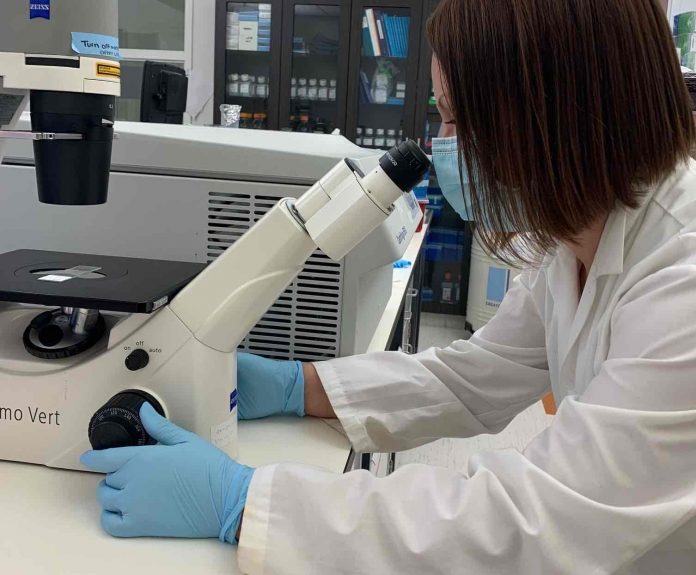After discovering how a specific gene fuels a deadly form of children’s brain tumour, University of Manitoba researchers have successfully decreased this cancer in mice.
The research, published today in Nature Communications, found that the gene OTX2 acts like a control switch for an extremely aggressive form of children’s brain tumour called Group 3 medulloblastoma. However, the researchers discovered that this control switch is dysfunctional, and it keeps the cancer stem cells in a permanently on position.
“The OTX2 gene is perpetually fuelling the tumour, and that’s really bad. It makes the cancer difficult to treat,” said the paper’s corresponding author Dr. Tamra Werbowetski-Ogilvie, an associate professor of biochemistry and medical genetics in the Max Rady College of Medicine and a Canada Research Chair in neuro-oncology and human stem cells.
“Children’s brain tumours are the deadliest form of childhood cancer. Even though we’ve made progress in classifying these tumours, we are working even harder to find better, more targeted therapies that will wipe out the stem cells, basically the root of the cancer that drives the disease.”
The paper, written by first author Dr. Jamie Zagozewski, a postdoctoral fellow in Werbowetski-Ogilvie’s lab, describes how they mimicked the effects of decreasing OTX2 with drugs to slow brain tumour growth in mice. Targeting this pathway mimicked the effects of silencing OTX2 and dramatically decreased tumour growth.
“The drug doubled survival time in about 30 to 40 per cent of our animal models,” said Werbowetski-Ogilvie, also a research scientist at the Children’s Hospital Research Institute of Manitoba. “We’re really proud because in the most aggressive model we found that it actually slowed down tumour growth.”
This is important for children’s brain tumours, as the drugs need to penetrate the brain and work without causing additional damage, she said.
“What we are working towards for kids with brain tumours is creating a better, more targeted therapy while still preserving some of their normal brain function and have less toxic effects on their nervous systems, which are still developing,” she said. “This is very important for children.”
Today, the most damaging therapies, like radiation, for children with Group 3 medulloblastoma are necessary to treat the disease, Werbowetski-Ogilvie said. With a targeted therapy, like the one they’re working on, doctors could one day use it in combination with a lower dose of chemotherapy.
Zagozewski’s work on the project was funded by a joint fellowship from the CancerCare Manitoba Foundation, the Children’s Hospital Research Institute of Manitoba and Research Manitoba.
Werbowetski-Ogilvie’s lab has received funding from the CancerCare Manitoba Foundation to continue this research. The next step will look at other drugs, which they will combine with the ones the team has already tested, to further decrease growth and spread of the tumours. They also want to discover whether OTX2 plays different roles in medulloblastoma growth versus normal development of the brain, which will give them insight into the origins of the disease.
“Understanding how these control switches like OTX2 help make medulloblastomas grow offers fresh opportunities to target Group 3 medulloblastoma, prevent progression and spread and decrease the toxicity of therapy for children with this devastating disease,” Werbowetski-Ogilvie said.















